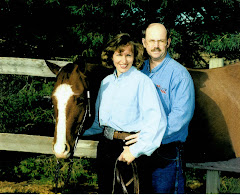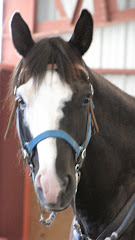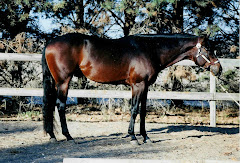Why do you think you are not a balanced rider? What is not in balance? Your upper body? Your lower body? Or an individual part of your body? Your legs? Your head? Your right or left shoulder?
One of the Centered Riding Basics is Building Blocks. The alignment, that we were all taught in 4-H or basic riding lessons, still applies. Back of ear, through your shoulders and hips, to the back of the heel. A straight line from your shoulder, hip to your heel. But what is also just as important is the ear.
How much do you think your head weighs? 2#? 5#? 10#? How about 10-12# for an adult! That is a lot of weight that can throw your whole upper body off balance. And where do most people go when they are thrown off balance? Forward, over the horse’s neck.
Even if you are not thrown off balance, but you are constantly looking down, where did the weight go? Forward. And down. Down onto your horses withers and shoulders to the front legs.
As I’ve been doing lessons the past few weeks, I have concentrated on balancing the head of the rider, as well as the rest of the body. It is amazing how much more you look UP after you have balanced your head. First, look straight ahead, and look at a point on the wall. Remember where this point is, because we will come back to that point to see if we are still looking at it.
We start to balance our head by tipping the head side to side, first one way than the other, slowly. Each time we go from side to side with out head, we tip our head a little less each time, until we settle into the middle. Then we balance our head from front to back. First touching our chin to our chest, than slowly leaning our head back. We tip our head a little less each time, until we settle into the middle.
Where are you looking now? Every time I do this myself, I am always looking a few inches higher. Another thing that I have realized this past month, as I’m doing the exercises along with the lesson people, is that I’m not as stiff in the neck and shoulder area as I used to be. I still am a little tight behind one shoulder blade, but as I do the stretches, I can tell that my body is starting to relax and to stay in proper alignment.
Another exercise that I feel has been helping with the head alignment is a vertical stretch of our arms. First, let’s get our soft eyes and take a couple of deep breaths. As we stretch, we will breathe deep. Breathe in through your nose, fill up your lungs, so that the air pushes down onto the diaphragm and your stomach moves. Exhale through your mouth. Breathe deep a couple of times.
Now, with your hands on top of your shoulders, and your eyes soft, breathe in deeply. Try this now, sitting in your chair. First put both feet flat on the floor, shoulder width apart. Look straight ahead and see where you are looking.
Now, as you breathe in deeply, slowly straighten your arms upward, then as your breathe out slowly through your mouth, turn your palms out, with palms down as you slowly lower your arms to the sides of your body. (Turning your palms down as you lower your arms is important so there is no twist on the bones in your arms.) Repeat 2 more times, slowly, deep breathing and with soft eyes. Where are you looking? I am looking about 2” higher than I was looking before doing the exercise. On a horse, looking at the arena wall, I may look 6” higher, depending on how far the wall is.
We always want to move our joints slowly, to allow the tight muscles and ligaments to stretch without causing them any harm. And as always, if you feel any pain or discomfort, stop stretching. If the pain or discomfort continues, please see a doctor (I almost said vet! Lol).
I am interested in what you are thinking so I can help you. Do you tend to lean one way? Do you feel like you're not sitting straight? Where are your muscles tight? What gets sore when you ride?
I’ll move on to balancing the shoulders and more upper body exercises next.
Come along on the journey!
Turning Night to Day
9 years ago







No comments:
Post a Comment